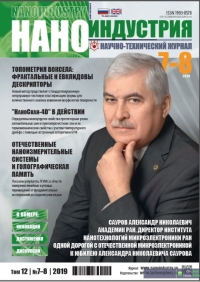Voxel based topometry: fractal and Euclidean descriptors of diffusion-weighted shape of multi-directional magnetic resonance signal Voxel-based surface shape in multi-directional diffusion-weighted magnetic resonance imaging exhibits remarkable topological heterogeneity. Once the outline of an irregular shape is identified and segmented from a digital image, geometrical descriptors can be applied to numerical characterization the irregularity of the shapes surface. In our work the fractal and Euclidean dimensions of volume, area and mean radius for each surface were determined. These indices can be used as a surrogate parameter for determining the roughness of the surface. The relationship between indices from various voxels reveals the existence of distinct groups with significant structural differences which may be caused by underlying biological tissue types. This new method allows for the standardized continuous numerical classification of shape, which is useful for the quantitative analysis of altered surface morphology, e.g. biological tissue inflammatory diseases, aging, and development.
AFM studies of cell structures in biomedical research AFM was developed as an object visualization technique that presents a three-dimensional (3D) topographic image and structural details of samples. The ability to work in liquid media and at ambient temperature moved the AFM to biology and led to the analysis of biomolecules and cells at sub- / nanometer resolution. Today, AFM is a powerful multifunctional platform for visualizing biological samples from single molecules to living cells. The use of AFM as a nanodiagnostic device is a new area of biomedical research.
Nanodrugs identification AFM was developed as an object visualization technique that presents a three-dimensional (3D) topographic image and structural details of samples. The ability to work in liquid media and at ambient temperature moved the AFM to biology and led to the analysis of biomolecules and cells at sub- / nanometer resolution. Today, AFM is a powerful multifunctional platform for visualizing biological samples from single molecules to living cells. The use of AFM as a nanodiagnostic device is a new area of biomedical research.
Modification of epoxy composite material by biogenic silica Samples of biogenic silica (SiO2) were obtained with a target component content of 76.4– 99.9% by means of calcination in oxidative ashing and alkaline extraction. Influence of the prepared silica on the heat resistance and mechanical strength of a composite material was studied based on the ED-20 epoxy oligomer cured by iso-methyltetrahydrophthalic (iso- MTHPA) anhydride.
Application of low-temperature low pressure plasma in clinical medicine and pharmaceutics Described are the generators of electron-beam plasma and hybrid plasma intended for the modification of (bio)polymeric materials used in medicine. Data on surface morphology, chemical structure and biological activity of modified polymers are presented.
Nano-dynamic mechanical properties investigation of automotive tread rubber at temperatures from –60 to 60 °C using nano-hardness tester "NanoScan-4D" We investigated rubber viscoelastic properties at near surface layer using nano-hardness tester "NanoScan-4D" placed in climatic chamber. The same temperature of sample and the device made it possible to minimize the measurement errors arising due to thermal drifts.
It is easy as a pie to build a plant in the sky Only one who can build a high-tech plant produces a lot of useful goods and will be successful in a modern digital production. Our story is about 3D precise positioning systems which are in demand in a number of areas such as milling machining centers, micromachining, laser cutting and engraving, scanning probe microscopes and molecular 3D printers.
Domestic holographic nano-measuring systems of linear and angular displacements and the LGIIS holographic memory system The level of measuring instruments for the nano-range determines the level of development of science and technology, and ultimately, the economy of any developed state. According to the father of Russian metrology D.I. Mendeleev "Science begins from the moment they begin to measure. Exact science is inconceivable without measure". This article shows what results LGIIS has achieved in the field of measuring linear and angular displacements, from basic research to the creation of specific nano-scale systems with a resolution of up to 1 nm and 0.01 angular sec. Some of these systems have no analogues in the world.
Femtoscan and Femtoscan XI at the "Open innovations" forum From October 21 to October 23, the VIII International Forum "Open Innovations" was once again held in Skolkovo. This year’s forum topic is "Digital Nation. Transfer to the intellectual economy". The Advanced Technologies Center participated in the event as an exhibitor, and the leading employees of the company made presentations.
Vacuum Science and Technology 2019 From September 16 to September 21, 2019, the 26th Scientific and Technical conference with the participation of foreign experts "Vacuum Science and Technology" was held in Sudak.

 rus
rus


